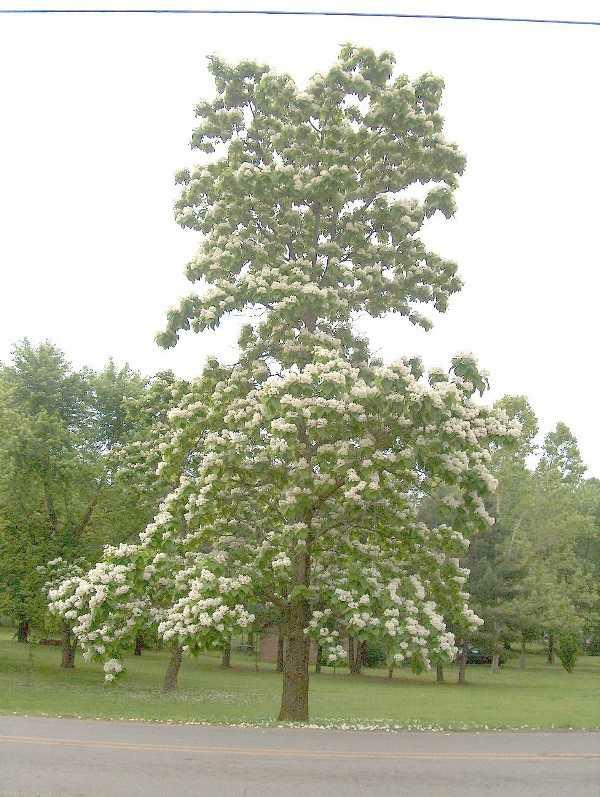Catalpa (Catalpa Bignonioides)
Catalpa
Catalpa bignonioides, commonly called Southern catalpa, is a medium-sized, deciduous tree that typically grows to 30-40’ (less frequently to 60’) tall with an irregular, broad-rounded crown. It is native to a relatively small area extending from central Mississippi, Alabama and Georgia south to the Florida panhandle. It most often occurs in moist soils along streams and river banks. Very broad leaves (to 10” long and 6” wide) are short-pointed at the tip and rounded or heart-shaped at the base. Leaves are light green above and pubescent below. Leaves emit a somewhat disagreeable aroma when bruised. Bell-shaped, fragrant, white flowers (to 5” across) with purple and yellow inner markings bloom in May-June in many-flowered upright panicles (to 10” tall). Flowers are very ornamental. After flowering, seeds appear in long narrow pods (to 15” long). Pods mature to dark brown in fall and then split open lengthwise to release the seeds. Seed pods give rise to the additional common name of cigar tree.
Genus name comes from a North American Indian name.
Specific epithet means resembling the genus Bignonia.

Easily grown in average, medium to wet, well-drained soils in full sun to part shade. Tolerant of a wide range of soil conditions including both wet and dry soils. Tolerant of seasonal flooding. Prefers moist fertile loams.
| Hardiness zone | 5 - 9 |
| Sun light | Full Sun To Part Shade |
| Water | Medium To Wet |
| Maintenance | Medium |
No serious insect or disease problems. Susceptible to verticillium wilt, leaf spots, mildew, dieback, anthracnose and twig blight. The larvae (caterpillars) of the catalpa sphinx moth may do considerable damage when feeding on the leaves. Watch for mealybugs, aphids, scale and whiteflies.
A mature, symmetrically rounded catalpa tree can be a tree of great beauty, particularly in spring when the foliage is young and the flowers are in bloom. Unfortunately, it is otherwise a rather coarse tree that many believe does not deserve a prominent place in the landscape. Branches are brittle and mature trees infrequently exhibit classic form. Foliage also tends to depreciate as the growing season progresses, the large leaves being subject to damage from hail, wind, insects and sometimes disease. It has been widely planted in urban areas as a street tree and lawn tree, and can also be effectively used in the landscape for difficult areas such as moist low spots or dry areas with poor soils.
| Common name | Catalpa |
| Botanical name | Catalpa Bignonioides |
| Plant type | Tree |
| Family | Bignoniaceae |
| Hardiness zone | 5 - 9 |
| Water | Medium To Wet |
| Maintenance | Medium |
| Flower color | White With Purple And Yellow Markings |
| Flowering period | May - June |
| Height | 30 - 60 Ft. |
| Width | 20 - 40 Ft. |